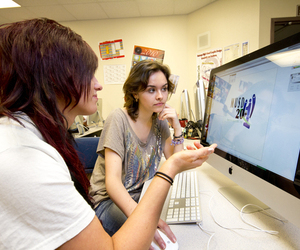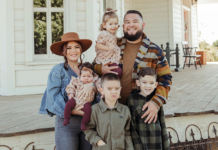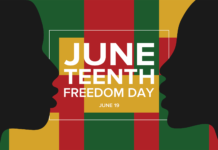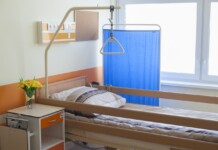
Ninety sixth-, seventh- and eighth- graders will get a crack at a new kind of classroom in the Maricopa Unified School District this fall.
Students from both middle schools — 30 in each grade — will pilot a program at Maricopa Wells Middle School in what educators call blended learning.
To the students, it means using the technology with a safety valve: a teacher.
While a software-learning program will direct them through lessons at their own pace, a classroom teacher will monitor their progress through computer analytics. At the drop of a hat, that the teacher can pull a student — or group of students — away from the computer and present a lesson a different way.
The teacher will supplement learning with more traditional methods such as field trips, group discussions, and projects throughout the school day.
“It’s almost a very free, organic education,” said Desert Wind Middle School Principal Joseph Veres, who is shepherding the new program.
“Our kids want technology, they want to have control of their education, and they want to go at their own pace.”
Veres is working on his Ph.D. and is researching blended learning and teacher effectiveness.
Deputy Superintendent Ember Conley called him a “forward thinker. He is the expert.”
“I’m never satisfied with the status quo,” she said. “This is the right thing for kids so they can learn, grow and expand using technology as a tool.”
Blended learning is still in its early stages of development and has its critics. Opponents say it’s too socially isolating for students, higher achievement isn’t guaranteed, and some software programs don’t meet educational needs.
John Huppenthal, Arizona’s superintendent of public instruction, favors blended learning, and the state is working with a math program in the Yuma Elementary School District.
“We’re testing the environment ourselves to see the academic gains,” Huppenthal said.
The right software is vital in this evolving field, he said. “We would love to work with (MUSD) on the selection of the software … and how they’ll be tracking achievement.”
***ADVERTISEMENT***William Lange, social studies and broadcast media teacher at DWMS and a blended-learning proponent, said the new program “is the best of all things from home schooling to online schooling, and the best of brick and mortar blended into one space.”
The program also will use the existing Maricopa Online classes, which include 30 languages and agricultural courses.
The program will be housed at Maricopa Wells Middle School because the school is under a state mandate to restructure. The blended-learning program is one step.
“We’re in a school improvement situation, and we’re in an important mode,” Maricopa Wells Principal Rick Abel said.
Some people are concerned the new program will only be for the high achieving students, or, conversely, the behavior-problem kids.
A system through which students apply to the program and then are chosen by lottery evens the playing field, Abel said.
“This won’t be an alternative school for behavior problems, although that would not keep a kid like that from being included if this could be a better way for them to learn,” he said. “We’re all about the opportunity for kids.”
Conley, the deputy superintendent, said: “It’s our hope and goal to add more kids and a grade each year, so we’ll have fifth graders in 2013.”
Veres said by having the program part of the bigger campus, all activities from band to athletics to school clubs are available to the blended-learning student. Transportation logistics are being addressed.
To market and promote the new program, Veres is working with the Career/Technical Education students at Maricopa High School to come up with a plan to get the word out to the community.
The program has been named MUSD20+1 to represent the district moving into the 21st century.
“I met with them and these kids are incredible. They were just spinning ideas and were talking about an iPod application for students, among other things,” Veres said.
A model of the fall program may be available to incoming sixth graders in a four-week, tuition-based summer school math program at DWMS, Veres said. The details are being worked out in conjunction through a youth development partnership with the city of Maricopa.
As district administrators and faculty continue to ready the program for fall, Veres said, “We want to offer the best to our students, but the best is different. Some will excel with traditional learning, some will grab the technology. We want to have all the options.”

![Who’s the Best Mom InMaricopa? Nominate now! Marlene Marshall, Christina Olivares, and Meghan Bremer. [Bryan Mordt]](https://www.inmaricopa.com/wp-content/uploads/2023/05/BCM_8465-218x150.jpg)



![Maricopa sheds tears amid Maui wildfires that killed dozens For Maricopa resident Janelle Gomez, the sorrow mirrors the loss of a family member. [Brian Petersheim]](https://www.inmaricopa.com/wp-content/uploads/2023/08/Gomez-218x150.jpg)
![Embracing Freedom: Celebrating the Fourth of July Councilmember Vincent Manfredi at Great American 4th 2021 [Victor Moreno]](https://www.inmaricopa.com/wp-content/uploads/2023/07/2021-Great-American-4th-e1688414543522-218x150.jpg)





![Alleged car thief released without charges Phoenix police stop a stolen vehicle on April 20, 2024. [Facebook]](https://www.inmaricopa.com/wp-content/uploads/2024/04/IMG_5040-218x150.jpg)

![3 things to know about the new city budget Vice Mayor Amber Liermann and Councilmember Eric Goettl review parts of the city's 2024 operational budget with Mayor Nancy Smith on April 24, 2024. [Monica D. Spencer]](https://www.inmaricopa.com/wp-content/uploads/2024/04/spencer-042424-preliminary-budget-meeting-web-100x70.jpg)


